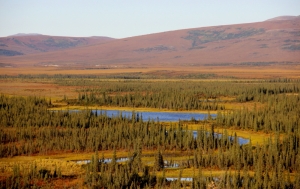
I don’t mean to be offensive (as some people might interpret the title of this article). It’s appropriate. Native Alaskan tribes have elected (long ago in fact) that most didn’t want to live on the “prisons” the white man called reservations. Instead, corporations were set up to oversee and manage Native Alaskan land (during the 1971 Alaska Native Claims Settlement Act). They are choosing to live off the reservation; but the idiomatic meaning of the phrase, while not 100% accurate for our native neighbors, is pretty accurate for us. Village life is off in many ways.
It’s a feeling more than anything else, and that makes it very difficult to describe if you haven’t had the experience yourself. Sure, I can paint you a picture, but it won’t really give you the feeling. I’ll endeavor to do my best though.

The three aspects of the Alaskan villages that make life here the most different are size, location, and culture (to some degree, and I’m not talking about Native Alaskan culture – I mean survival/subsistence culture, which I suppose is an offshoot of both the size and location issues). Life here, interestingly enough, has a lot in common with the experience we had on top of the mountain in Nepal at the Buddhist Monastery. Again, size, location, and culture. We’ve been in third–world countries that felt more “American” than it feels to be here in spite of some of the modern conveniences that we are allotted (like phone calls home, domestic flights again, and our own zip code).
Size
Kiana is .2 square miles. That means that you can walk from one side to the other in about 20 minutes. There are no paved roads, the paths are dirt/mud/eventually snow & ice. The population hovers around 400, and the average age is 28 (and will get lower as the elders unfortunately continue to die off). Everyone knows everyone, like in other small towns across the lower 48; however, most people are related to each other in some way. Remember, 97% of the population are not only Native Alaskans, but natives from the same tribe. Many of Jen’s students have brothers, sisters, and cousins in other classes in the school.
Everybody is somebody else’s relative, and everybody is into everybody else’s business. They know everything. Gossip is all over the place, and as ‘foreigners‘ coming in from other places, all the teachers must really watch what they do and what they say to not get caught up in a feud or some sort. It would be like if your entire social world was one street: Wysteria Lane…
Location
Kiana is located 30 miles north of the Arctic Circle. In August, the temperature hangs out in the 40s and 50s (Fahrenheit) – and in the dead of winter it can drop down to -75F. Brrr…. So those temperatures affect just about everything. There is special gear that must be purchased and worn (and layered, layered, layered) to keep warm just to go outside. A ‘regular‘ winter coat and boots that might get you by during a New York or even Minnesota winter won’t get the job done here. There is an entire subculture of winter that people learn about and live. It’s survival, pure and simple.

In addition to our location on the globe, we are also more rural than rural. I explained in a previous blog that there are no roads to get from village to village (there are trucks here, I’m not sure how they got them in though). People have to fly in. Each village has an airstrip (ours is gravel) and a local small business that charters flights in/out.
Now, that’s not entirely true because we are located right on the Kobuk River, which can be used via boats/snowmobiles to get from village to village along the waterway. Sometimes though, it’s impossible to leave.
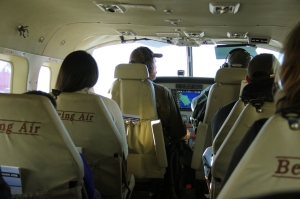
Planes and other transport are good–weather dependent. So if there’s a storm or fog or the temperature drops below –50F, everything shuts down: people and cargo have to wait it out, whether they’re stuck in the village trying to get out or out of the village trying to get in. We’ll see how big a pain in the butt this becomes come Christmas vacation…
Oh, and the prices! We have had some culture shock regarding what things cost up here. First of all, the food – for example – is higher priced in Anchorage than in say Seattle because of the additional shipping and handling just to get it up here.
But we’re not in Anchorage.
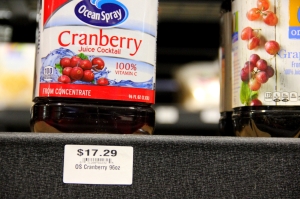
So we pay a premium to get the food from Anchorage to the village (food that’s already been marked up to a premium). It’s just part of the lifestyle where we are; what makes it harder to swallow is that we have been paying third-world prices for produce at a fraction of what most American pay (sorry to rub it in). To go from one extreme to the other has me ripping handfuls of hair out of my skull!
So if you’re unlucky enough to find yourself in the precarious position of needing a missing ingredient for your fresh baked chocolate chip cookie recipe, you’ll need to go to the village store to pick some up. The village stores are even higher priced than the Anchorage ones that ship into the villages.
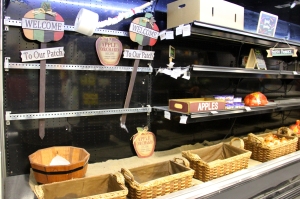
And they might not even have what you’re looking for by the time you arrive! One of our stores here didn’t have eggs for weeks (the shops are just as vulnerable to the weather and availability of items as we are when we order online).
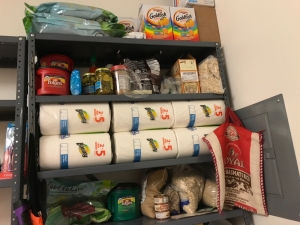
Speaking of online ordering, not everything is available or able to be shipped up here. We have to use different stores for different things. Learning all of that is tricky. Mistakes were made. Other mistakes were made. But overall, we’re slowly getting the idea. Amazon Prime has been a godsend to these people, and stores like Fred Meyer (Alaskan version of Walmart) has created a special “Bush Orders” department, where they handle shipping and handling for the rural villages. We’ve managed to get everything we need – so far.
Culture
Native Alaskan culture aside (since we’ve had to deal with that aspect of changing countries over and over for the past six years), I have to tell you about the survivalism up here (I was asked before we got here what kind of gun I was bringing… what? What?? WHAT?!?!).
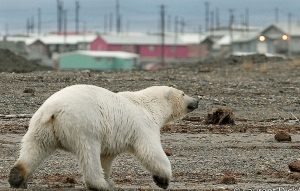
It’s like you stepped off the plane and entered 1860 (calling Doc Brown...). There is no radio station (the alarm clock only gets static – try waking up to that every morning). There is no TV station. Villages have cell phone service (a single company has the monopoly), but no 4G data (not even 3G or 2G), only talking and texting – and that’s only a recent development. To communicate, villagers all have handheld VHF devices, which are great in emergency situations like there’s a storm coming or there’s a grizzly bear across from the general store or a pack of wolves over on Taylor Rd (yes, those things happen); but not-so-great when people feel like getting on the horn and venting about their deadbeat drunken husbands (yes, that also happens).
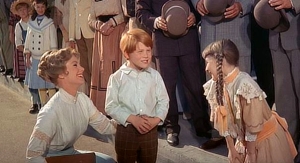
Most commonly the VHFs are used to inform people when planes are inbound. People wait around for flights so they can leave, but also for cargo shipments. Getting mail is an event here (like the Pony Express must have been in the 19th century) and something to get very excited about (O-ho the Wells Fargo Wagon is-a comin’ down the street, oh please let it be for me…). And that’s rightly so, considering the fact that all our food, clothing, and furniture has to get shipped in from Anchorage and other places.
The only commodity that comes out of the village are what the villagers hunt, trap, catch, gather, or create themselves. Subsistence hunting (and even whaling) is allowed for the natives and any Alaskan citizens who reside in the villages for so many days a year (visitors aren’t legally allowed to shoot anything). But there’s also fishing (and ice fishing), gathering mushrooms and berries (which the townsfolk, especially tween boys, try to sell you for exorbitant prices – I’d say highway robbery, but there are no highways), and trapping (my favorite character here is trying to get rid of a wolverine he took down for about $550.00).
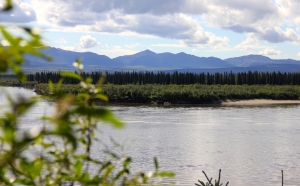
For fun, people take to the river in the summer to visit islands and beachheads and to explore the wilderness. In the winter, we’ve yet to see, but I’m guessing the buzzing hum of snow-gos (as they’re called here) will fill the air. I’ve been told that one can get all the way to Kotzebue in under 2 hours from here (57 miles as the crow flies). I’m not sure I’m brave enough to do it myself, but we’ll see if we end up investing in a snow-go or not. We’ve already been taken on a couple of moose–hunting expeditions down river, with no sightings; but it’s ‘early in the season for moose‘ apparently…
Those are the first impressions. Here’s another: this promises to be one of the most unique of all the adventures we’ve ever had!
Until Next Time…
-Justin
Excellent article
Great article. The part about it being a small town where everyone knows one another and many are related doesn’t sound much different from growing up in South Philly.